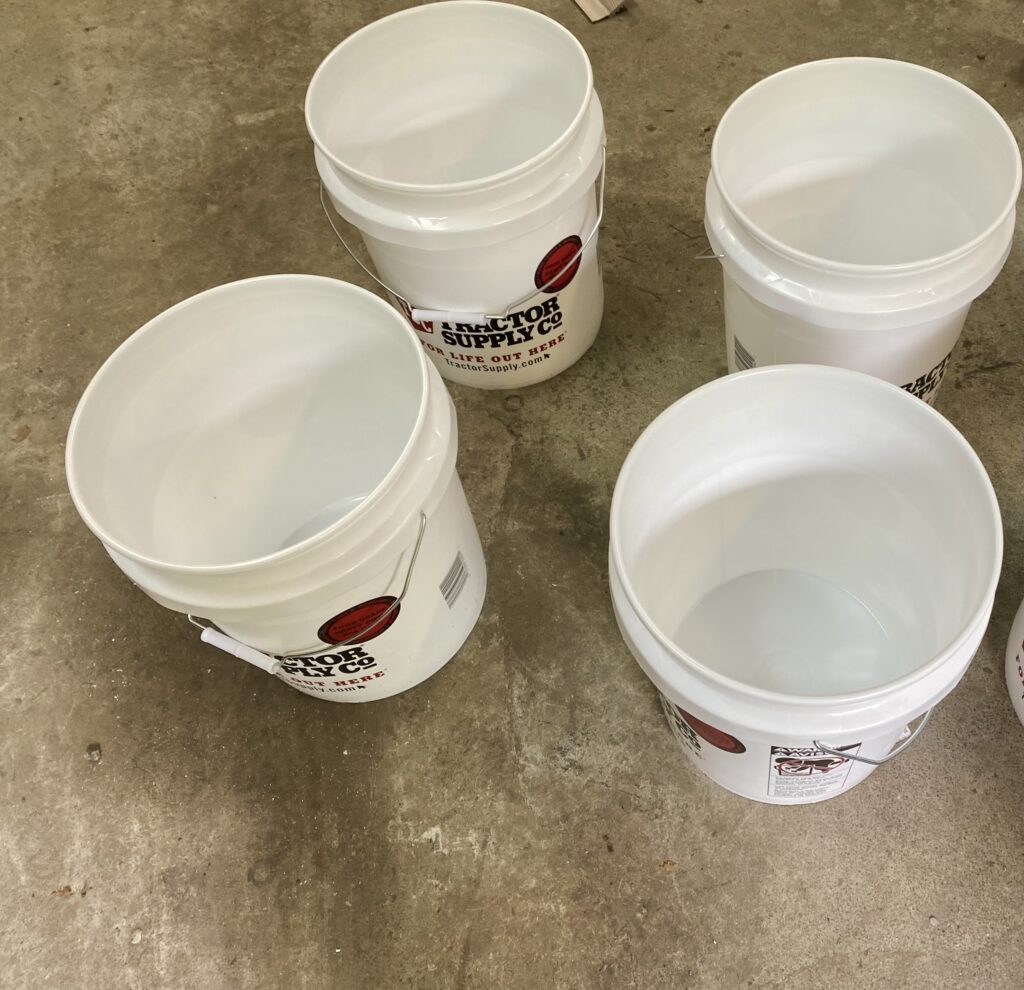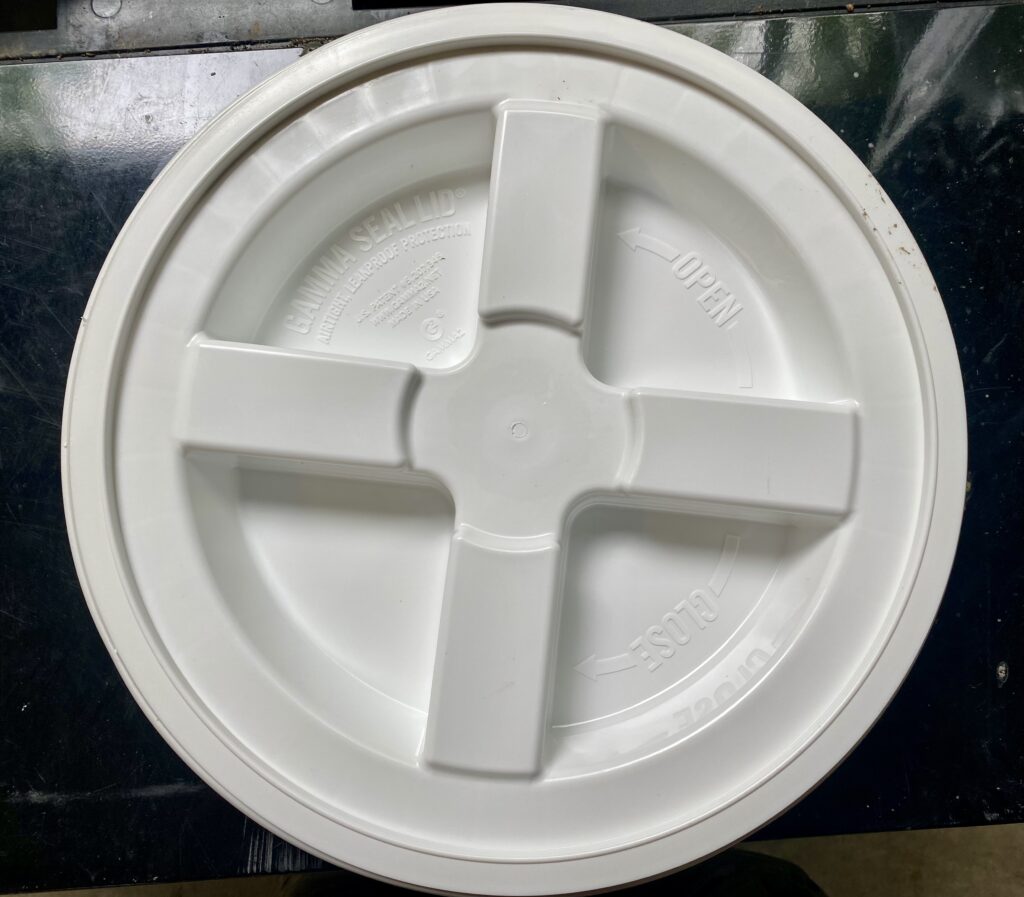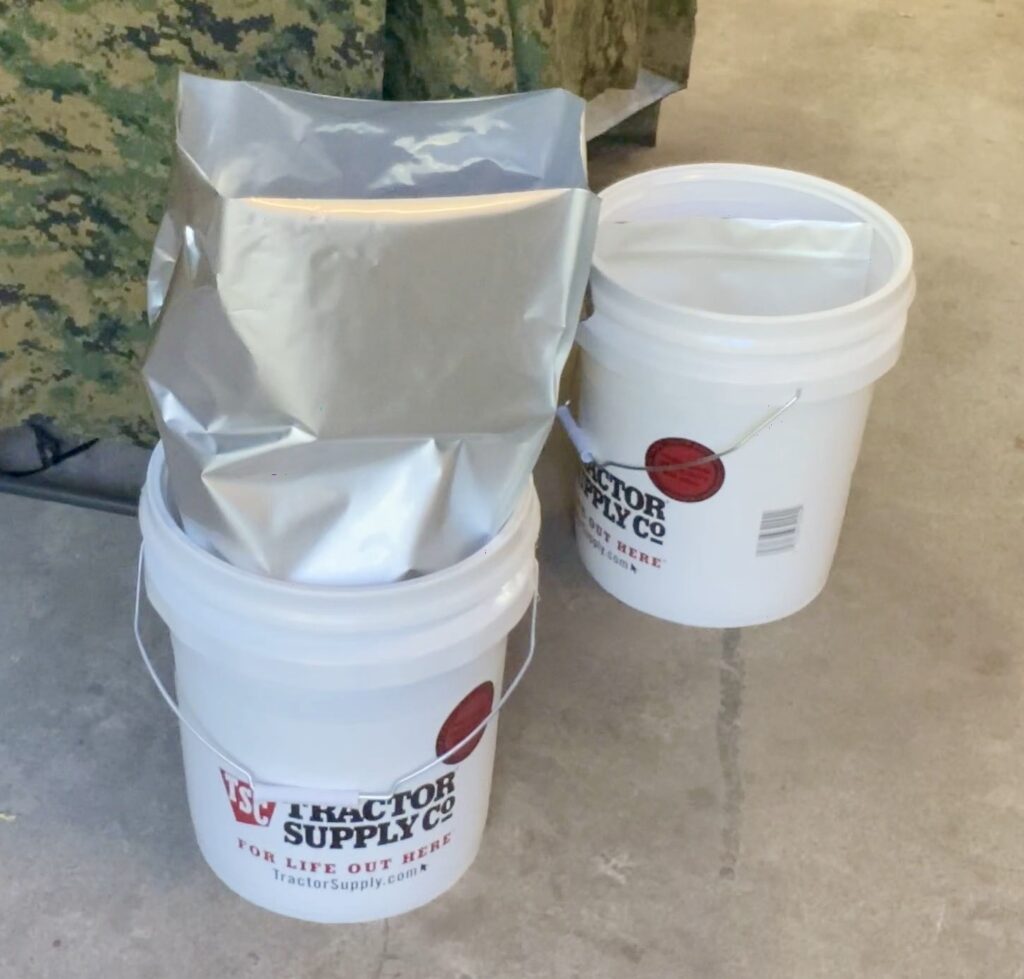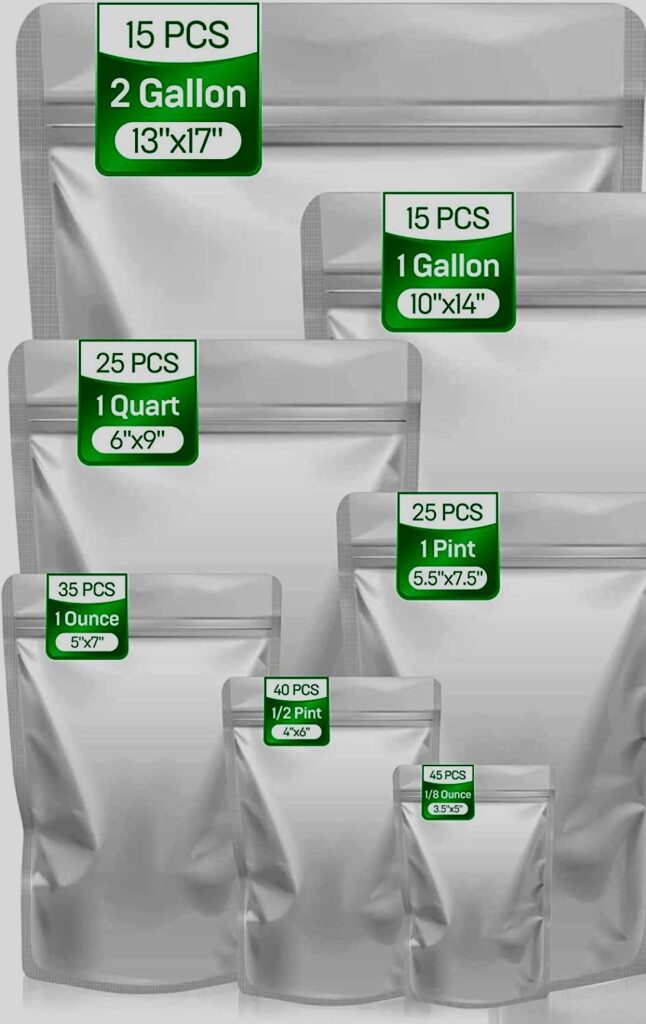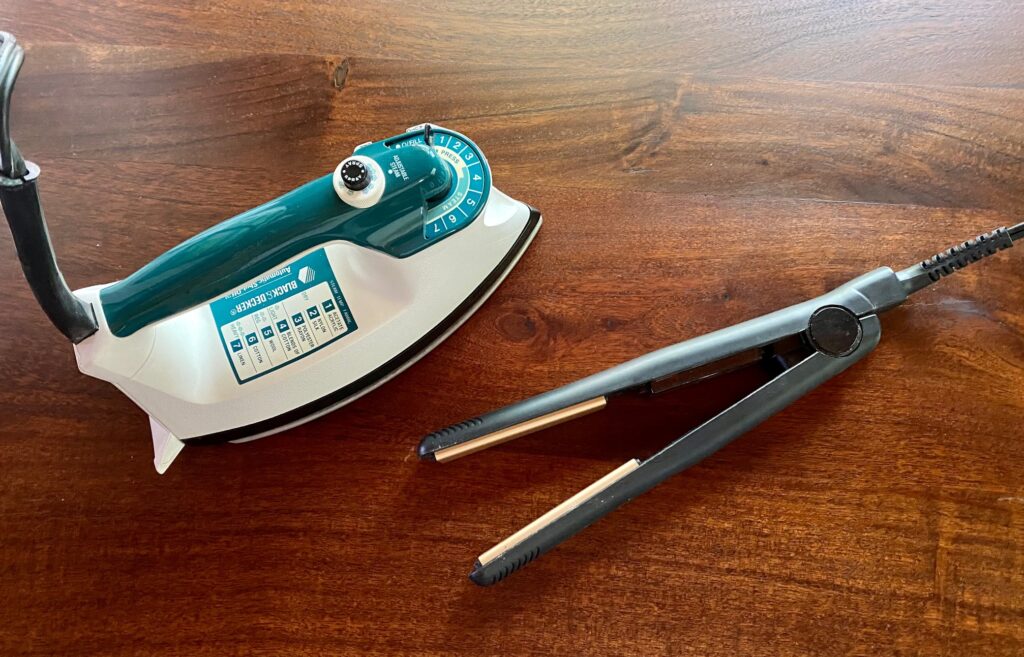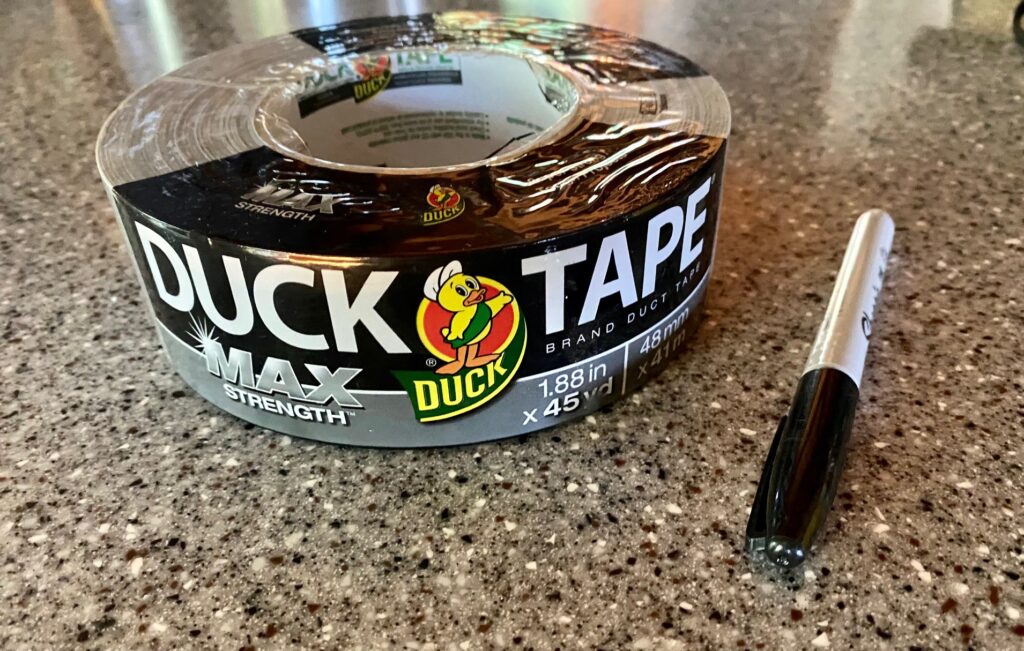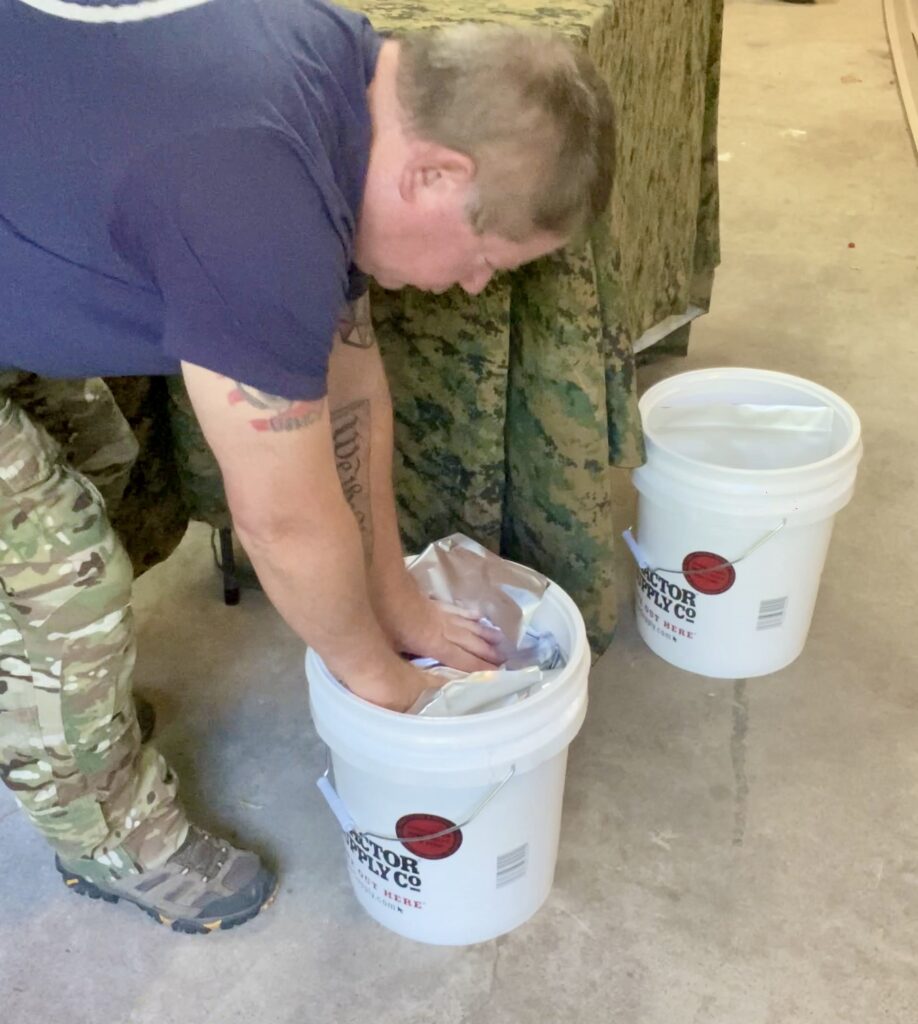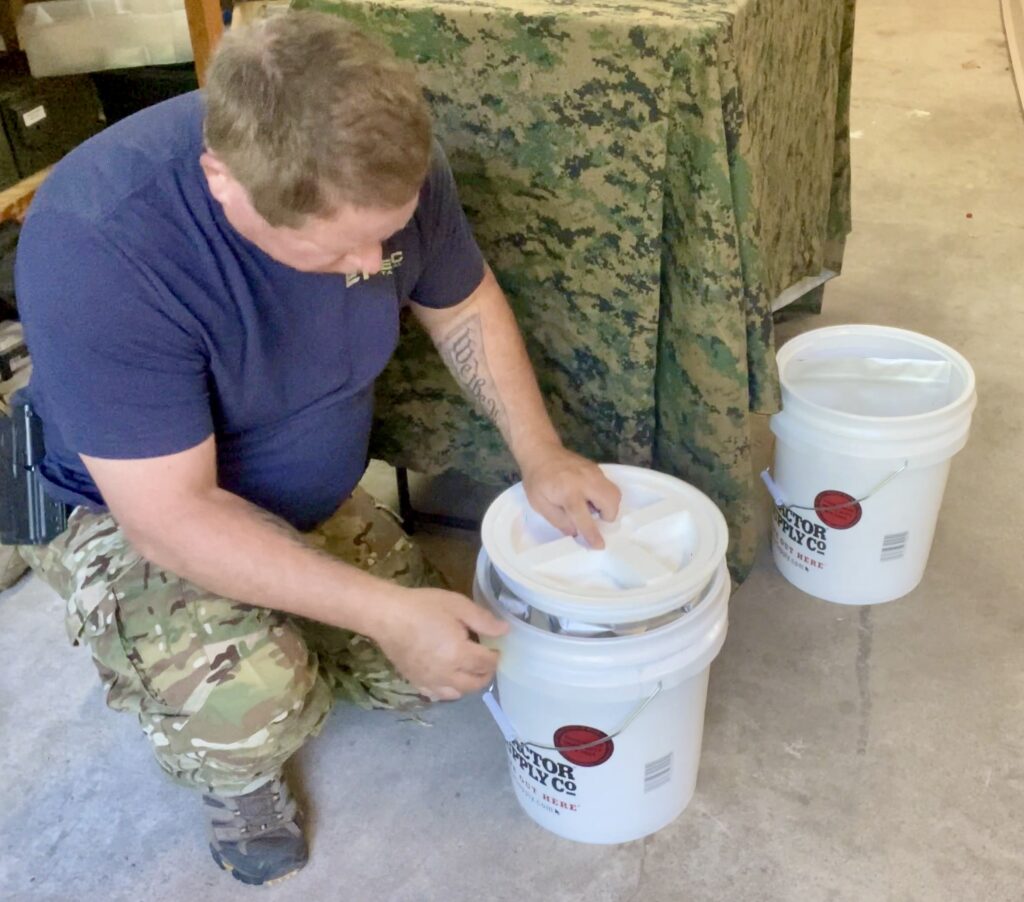HOW TO STORE FOOD FOR LONG TERM
When people first start out planning, preparing and acquiring items for either their bug out bag or home survivability, many questions come to mind. Often depending on which social media platform you watch videos on and the experience of the person teaching, correct information is a crap shoot.
This past week we had two inquiries about how to store food for the longterm. As this is a simple process, let’s take this one step at a time and included is a Vlog showing the process as well.
There is a saying,”If you take the food from the people, you control the people” and with what we are currently seeing happening in the World today this should be a major wake up call. If you have been procrastinating on getting your supplies in order, now is the time!
Regardless of a Natural disaster, political unrest or a foreign nation unleashing an EMP (Electric Magnetic Pulse) or Nuclear Weapon on the United States, without at least a year of supplies, life could get real serious and interesting.
Buying products such as Mountain House, Readywise or similar is great, but taste vary considerably on different products, so try before you buy a case or more. These products along with MRE’s are a good addition to your storage supply and can be purchased at your local outdoor store or online. But keep in mind there is nothing better then canning and storing real food.
So what do you need
Wether you go to your local big box store or online to secured what you think will last you until things returning to normal, the big question is how do you package it and where do we store it? That’s the question most ask, so let’s dive in and give you a little road map.
*How much of what you need is subject to so many factors and will be covered in an upcoming article.
5 Gallon food grade bucket
Food Grade buckets are thick sturdy containers and come in a variety of colors. You could choose to go with White buckets for beans and Red buckets for rice, which helps the organizational process. When purchasing these buckets I’d propose the extra cost for the Gamma Seal lids. These are screw on lids with easy access as i’ve always found it difficult open the hammered on lids. Additionally, if you choose to pack rice or other provisions in a smaller bag such as 1 pound Mylar’s, this gives you access to grab a weeks worth of food without opening a full 5 gallon bag that you will need to reseal.
These buckets are readily available from Tractor Supply, big box store or if you’re so inclined a local grocer can have them for free. Ask to speak with the manager and kindly ask what is available.
Mylar Bags
Mylar bags used in food storage have revolutionized the way that food is stored long-term. The main way that food is affected by long-term storage is through heat, light, moisture, oxygen, and rodents. When we use oxygen absorbers along with food grade storage buckets, mylar bags keep your food safe for many years. Mylar’s come in a variety of sizes from 1 gallon – 5 gallon.
When we talk about dry, low-fat foods that can be stored in Mylar bags, were referring to:
- Dehydrated fruits and veggies
- Flour
- Grains
- Pasta
- Sugar
- Dried beans
- Powdered milk
- Cereal
- Spices
Remember the key words here are dry and low-fat. Any food which has moisture in it may start to go bad in the Mylar bag.
So What is Not Suitable for Long-Term Storage?
These foods can still be stored in Mylar bags, but you’ll have to rotate through them about every 2-5 years (depending on the food).
- Whole-wheat flour
- Pearl barley
- Brown rice
- Brown sugar
- Chips
- Granola
- Dried meat/jerky
- Nuts
- Seeds
- Fresh or wet foods
- Dried eggs
- Milled grains (other than oats)
The same goes for foods which have fat in them – the fat will cause the foods to go rancid in around 3-12 months.
OXYGEN ABSORBERS
What Are they and what are The Benefits?
Oxygen supports the growth of microorganisms and causes rancid odors and discoloration to occur in packaged foods. Oxygen Absorbers are an essential component of any long-term food storage plan because they will continue to protect your goods throughout the time your food is stored.
They work in a two-step process by eliminating the initial amount of oxygen in your mylar foil bag while continuing to keep oxygen levels below 0.1% during the time that your food is stored and effectively reduce the aerobic environment thereby preventing bacteria, fungi and crap from growing.
It’s imperative that you use oxygen absorbers to extend the life of your food products. With a 5 Gallon food grade bucket you will need one 2000cc Oxygen Absorber. They come in a variety of sizes, so a couple 1000cc packets are fine as well.
So then which Foods Should we NOT use Oxygen Absorbers with?
- Salt: Will become rock hard if stored with an OA
- Sugar: Also will become rock hard; brown sugar also contains too much moisture for storage with OA’s
- Wet foods: Foods with moisture of 35% or more can grow botulism in airless environments. To play it safe, it is recommended that foods stored with OA’s have 10% or less moisture.
STANDARD IRON or FLAT IRON (hair straightener)
I have used both, but for the simpler mode I love the flat iron. Simply close the Mylar Bag and run the device across the top and you’re good. Using the Iron requires a hard surface like a 2X4 wood or similar to place the Mylar bag on and then run the iron across the bag.
DUCK TAPE & BLACK MARKER
You need to mark you buckets with a date and what is packed inside. Simple cut off some duck tape, stick it on the side of the bucket, label it and you’re good to go.
So How Do We Put It All Together
- Get your 5 gallon bucket in place
- Place Mylar bag into bucket
- Pour your rice or other contents into the Mylar bag
- Place one 2000cc Oxygen absorber into Mylar bag
- Close Mylar bag tight and push out the air
- When closed, run your iron across the top fully sealing the bag
- Check for any notable leaks and repeat sealing process if needed.
- Place lid onto your bucket and make sure its sealed
- Place your bucket in a cool environment that maintains 70 degrees or below.
How Long Will It Last
White Rice 20+ Years
Brown Rice 2-5 Years
Beans 25+ years
Oats 8+ years
Freeze Dried Fruits – Vegetables 25 years
White Flour 10+ Years
Whole Wheat Flour 10+ Years
Check out our Video on putting the process together on our YouTube channel @epictactical and happy prepping!



